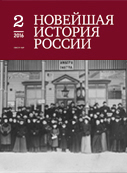Театральная цензура Ленинграда в первой половине 1950-х гг. (на примере драматических театров)
Leningrad’s Theatre Censorship in the First Half of the 1950s (on Example of Drama Theaters)
Author(s): Y. ZhuangSubject(s): History
Published by: Издательство Исторического факультета СПбГУ
Keywords: Theatre censorship; Dramatic theatre; Leningrad; Cultural policy; the First half of the 1950s
Summary/Abstract: This paper analyzes the mechanism of functioning of Leningrad theater censorship in the first half of the 1950s. Noting that in the postwar years, all theaters felt the tightening of censorship, the author, based on archival materials, reveals its special features in one of the most important cultural centers of the country. Analyzing reports on work of management on the Protection of Military and State Secrets in the Press (Lengorlit), the author points out that in these documents more attention was paid to the control of small works of dramatic art forms, and Full Plays controlled the General Directorate of the Leningrad Executive Committee of Culture. Considering the general principles of operation of the censorship authorities, the author shows the presence of this period specific censorship regulations in force in the Leningrad drama theaters. If the preliminary control by the text of dramatic works was under the General Administration of literature and art (Glaviskusstvo), the ideological control is reduced to amend the plan repertory theaters, manages the executive committee of the Leningrad City Soviet culture. The author notes that as changes in the political leadership of the country, related to the death of Stalin, underwent changes and cultural atmosphere. This was manifested in new trends, a reflection of what was the revival of the drama in the theater arts. By the example of Leningrad theaters analysis of Soviet policy in the sphere of culture, the article reveals peculiarities of censorship practices beginning of the 1950s. Their expression has become a double control over the work of theaters, which is contrary to the new trends in cultural life and the revival of theater art in general.
Journal: Новейшая история России
- Issue Year: 6/2016
- Issue No: 16
- Page Range: 268-276
- Page Count: 9
- Language: Russian

